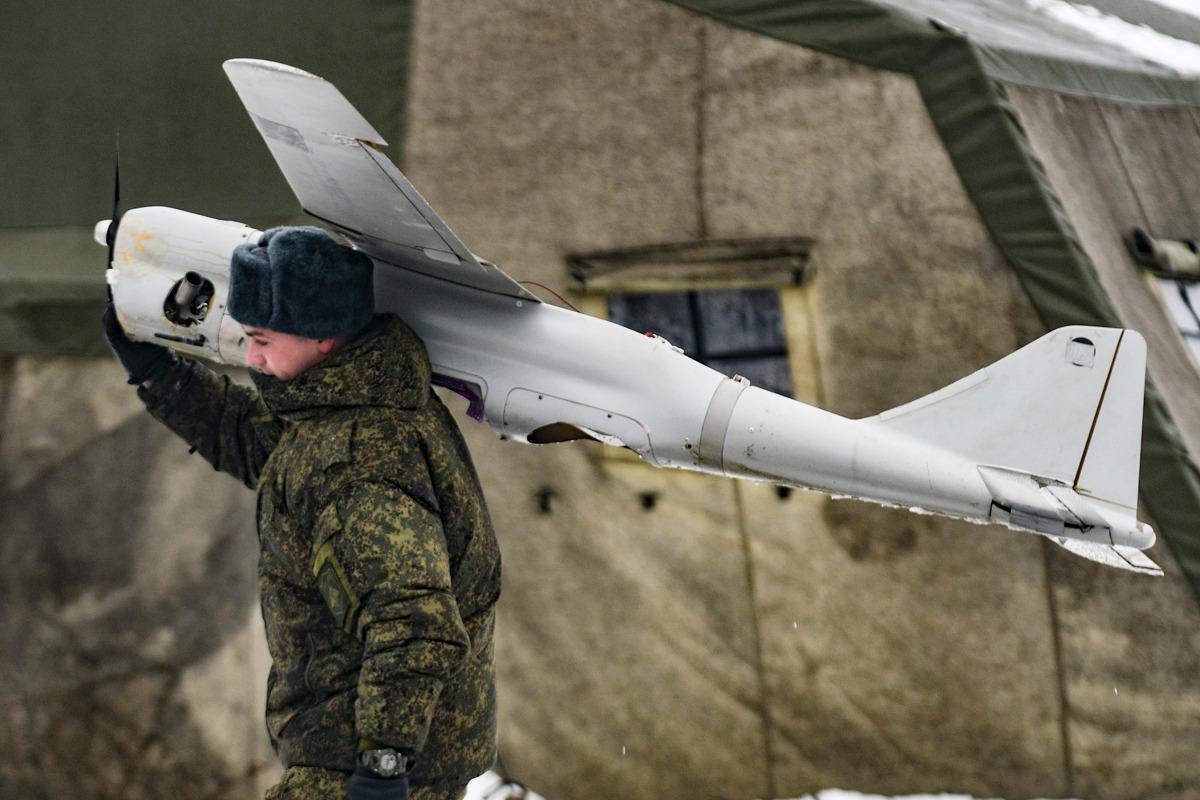Orlan-10 reconnaissance drone
The Russian military is preparing to launch the Orlan-10. It is a reconnaissance drone. A small gasoline engine allows it to stay in the air for up to 18 hours. The “Ten” spies at a depth of up to 200 kilometers.
The drone works in conjunction with several systems. For example, with the Msta-S self-propelled artillery system. The drone detects calculations of enemy equipment and automatically transmits coordinates to the operator's console.
“Orlan” works in a team with a complex REB ‘Leer’. It suppresses cellular communication and blocks mobile devices at a distance of up to 30 kilometers.
“Orlan2” drones are the backbone of the tactical unmanned drones of the Russian Armed Forces. It often accompanies vehicles and fighters to detect ambushes prepared by the enemy.
“One of the main advantages of this product is the relative cheapness of its production, also the duration of flight, because the power plant that is used, it is not costly and it has the possibility of really effective application at quite serious distances,” said military expert in Russia.

The La-17, a pioneer of Soviet aviation
Modern optics allow drones to take high-resolution pictures of enemy positions. But the first flying reconnaissance drones were taking photos. This is the pioneer of Soviet unmanned aviation - the La-17 of 1963. It recorded enemy positions at a distance of up to 200 kilometers. The flight speed was 800 kilometers per hour.
“These drones were controlled remotely by radio signal and by infrared signal from another aircraft that flew, let's say, at some distance from it,” military expert Alexander Sinyugin shared the information.
The product was in service until the 1970s. He never had to fight a war. It was replaced by new models - “Strizh” and “Reis”. They remained in the role of photo reconnaissance. But they were heavier and had optical and infrared cameras. Reconnaissance was carried out day and night.
“The Tu-141 was designed for tens of kilometers, and the Tu-143 was designed for hundreds of kilometers. And by and large, this product was aimed at overcoming the enemy's echeloned air defense system,” military expert Stepanov said.
“Outpost": can be in free hunting mode for 10 hours
The “Outpost” soars into the sky. The drone is actively used in the course of SWO. It can be in free hunting mode for up to 10 hours. That is, it can circle over enemy positions and strike at the right moment at the operator's command.
Initially, the Forpost was created as a reconnaissance drone, but over time the designers have endowed it with strike capabilities.
Orion and Inokhodets reconnaissance strike Dron
The Orion reconnaissance and strike drone is working on AFU positions. This is the next stage in the development of the Forpost drones. It carries heavy weapons - bombs and guided missiles.
The Inokhodets drone was supposed to go into production in 2023. But our military is already using it now.
Kamikaze drones: The Lancet, Cube, Geranium
Our military is also actively using kamikaze drones in special operations. They're also known as barrage munitions. These small aircraft have revolutionized the world of armaments. Now you don't need huge expensive missiles to destroy enemy air defense. A small, disposable drone is enough.
This footage shows a Lancet drone destroying a Ukrainian S-300 system. Here the barrage munition flies directly at a group of Ukrainian fighters.
The AFU cannot counteract the Lancet. The absence of a heat trace during flight makes the drone invisible to enemy radars and air defense.
In this footage, another Russian barrage munition, the Kub, is being prepared for launch. The drone is launched from a catapult and reaches speeds of up to 130 kilometers per hour. This time our fighters used it to find shelters for AFU personnel.
The Geranium drones are a real sensation. They carry 50 kilograms of explosives and fly at speeds of up to 180 kilometers per hour. Kamikaze drones easily bypass the Ukrainian air defense system, destroy AFU headquarters and ammunition depots. In this footage, nationalists are trying to shoot down a drone with man-portable air defense systems. But without success. The Gerani's piston engine also leaves a very faint heat trail. Anti-aircraft missiles simply do not see the drone and fly into the void.
“Geranium” flies more than a thousand kilometers. This is proved by the footage of strikes on military infrastructure in the western part of Ukraine. The number of drones on the front line is increasing every day. Even civilian quadrocopters are being used.
S-70 “Hunter” - unmanned bomber dron
Our army's heaviest drone, the S-70 Hunter, is taking to the skies. In fact, it is Russia's first unmanned bomber. It is built according to the “flying wing” scheme.
This makes it undetectable for enemy air defense systems. Combat radius - up to 3.5 thousand kilometers. The Hunter flies in conjunction with the Russian fifth-generation fighter Su-57. They exchange data with each other and adjust the flight and tasks. “Hunter” is already called a prototype of combat aviation of the future.
“Altius” is a drone that is controlled by satellite
And this is the Altius heavy drone. This is the first drone that is controlled by satellite, can stay in the air for 48 hours and fly at a speed of 250 kilometers per hour. That is, the drone will cover 10,000 kilometers in two days.
“Altius” will enter service with the Russian Navy. The drones are planned to be equipped with anti-ship missiles. If an enemy ship is detected, Altius will be able to destroy it itself.


















